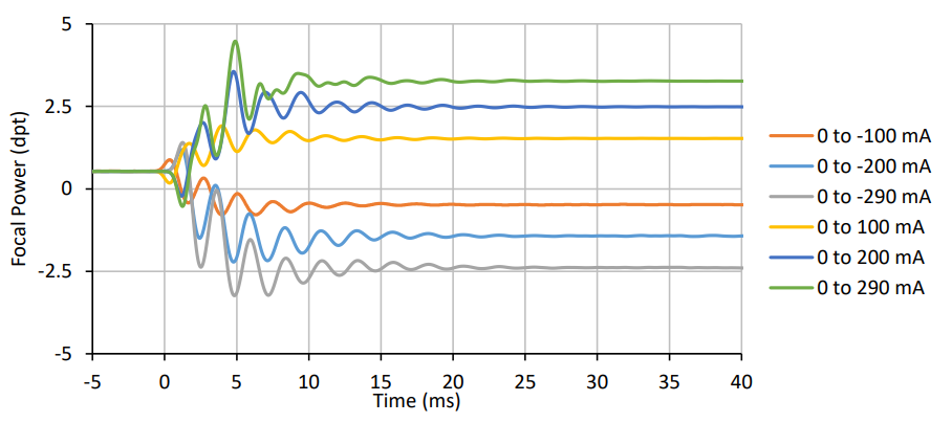In this article we explain why liquid lenses can be so fast and suitable for iToBoS body scanning purposes.
The speed of Optotune’s lenses depends on the optical aperture’s size of the lens. For bigger lenses, more liquid needs to be displaced, so the lens is slower. In the case of the iToBoS project, one of the biggest lenses available was chosen to allow the use of big camera sensors and, hence, reduce the number of pictures to be taken to cover the full body of the patient. This lens is the EL-16-40 which has an optical aperture with a diameter of 16mm. Despite its big aperture, this lens is capable of changing the focal power in 5ms, with an additional 20ms to settle down the transient oscillations.

Typical time response of an EL-16-40 liquid lens to a rectangular step of different magnitudes.
The long settling time is due to the high frequencies present in a perfectly rectangular step, which excite the higher-order modes of the lens membrane. If the input signal is conditioned to eliminate these high frequencies, it is possible to reduce the full transition time to about half. In the figure below, the time response of a lens excited with a rectangular step is compared to that of a lens excited with a low-frequency signal. The transient oscillations can be practically eliminated. The response time increases from about 2 ms (the plot corresponds to the smaller EL-12-30 lens) to about 5ms, but the additional settling time is reduced from 20ms to less than 10ms.

Typical time response of an EL-12-30 liquid lens excited with a perfectly rectangular step and with a conditioned signal (SC).
